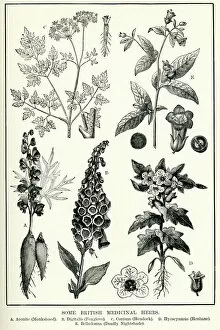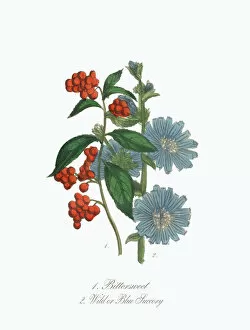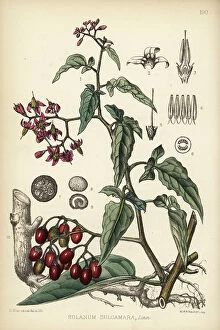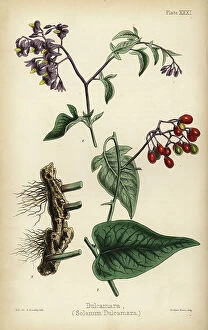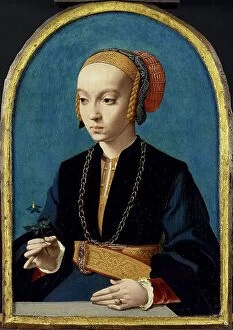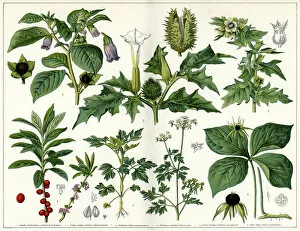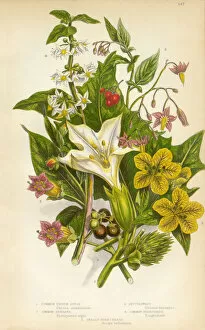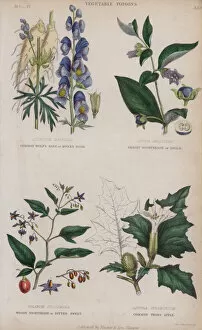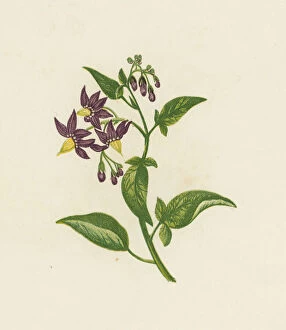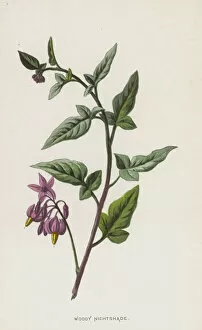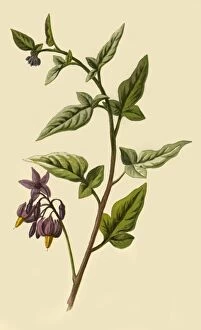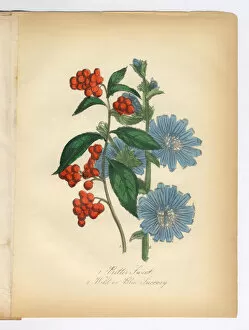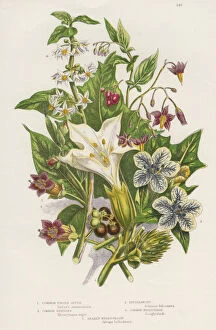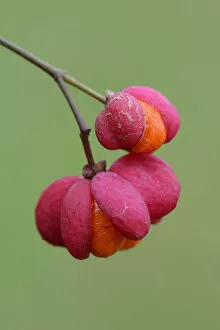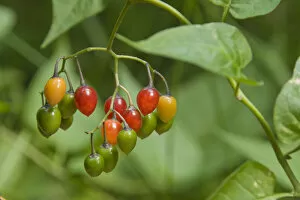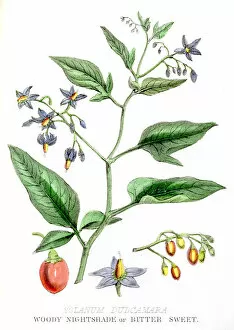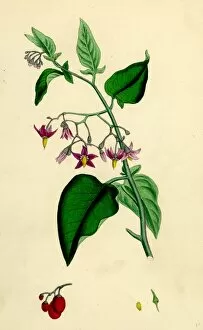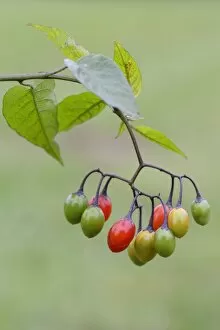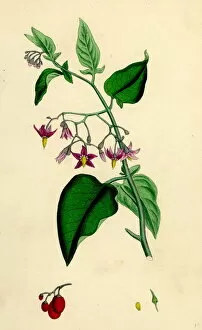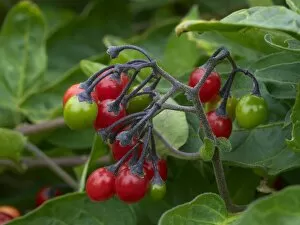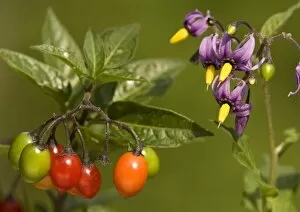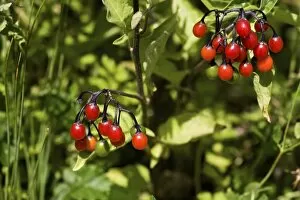Woody Nightshade Collection
"Exploring the Enigmatic Woody Nightshade: A Victorian Medicinal Herb and Poisonous Plant" Step back in time to the Victorian era
For sale as Licensed Images
Choose your image, Select your licence and Download the media
"Exploring the Enigmatic Woody Nightshade: A Victorian Medicinal Herb and Poisonous Plant" Step back in time to the Victorian era, where botanical illustrations of bittersweet and blue succory adorned the pages of scientific journals. Amongst these depictions were poisonous plants like thornapple, henbane, bittersweet, and nightshade - captivating yet dangerous. One such plant that caught the attention of botanists was woody nightshade or bitter sweet (Solanum dulcamara). Its vibrant colors were beautifully captured in color lithographs and chromolithos by talented artists like Frederick Edward Hulme. These illustrations showcased its slender vines intertwining with other flora, creating a mesmerizing sight. But woody nightshade's allure extended beyond its visual appeal. It possessed medicinal properties that intrigued herbalists of the time. Known for its bitter taste, this herb was believed to have healing effects on various ailments. From treating skin conditions to relieving joint pain, it found its place in traditional medicine practices. However, caution prevailed as scientists also recognized its toxic nature. Alongside common wolfsbane or monkshood and deadly nightshade or dwale, woody nightshade stood amongst notorious poisonous plants. The same enchanting berries that added beauty to European spindle trees could bring harm if ingested improperly. Victorian society marveled at these paradoxical qualities - a delicate balance between life-giving remedies and potential danger lurking within nature's creations. Botanical enthusiasts reveled in studying wild chicory alongside bittersweet and succory through meticulous illustrations capturing every intricate detail. As we delve into history's archives filled with colored engravings depicting common thorn apple and other poisonous plants from c1885 onwards; let us appreciate their significance both as cautionary tales about Mother Nature's darker side and as sources of inspiration for future research on medicinal herbs.

